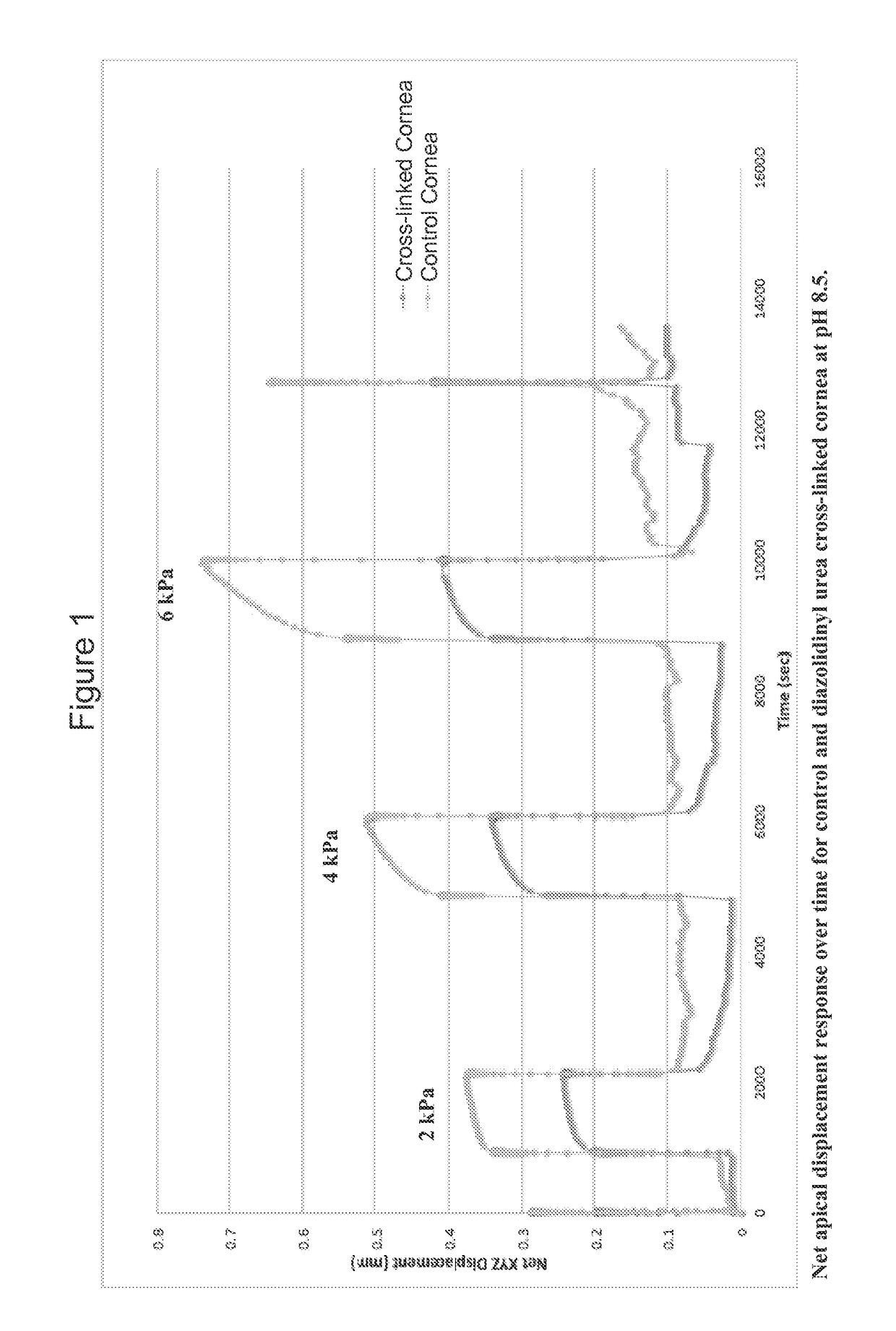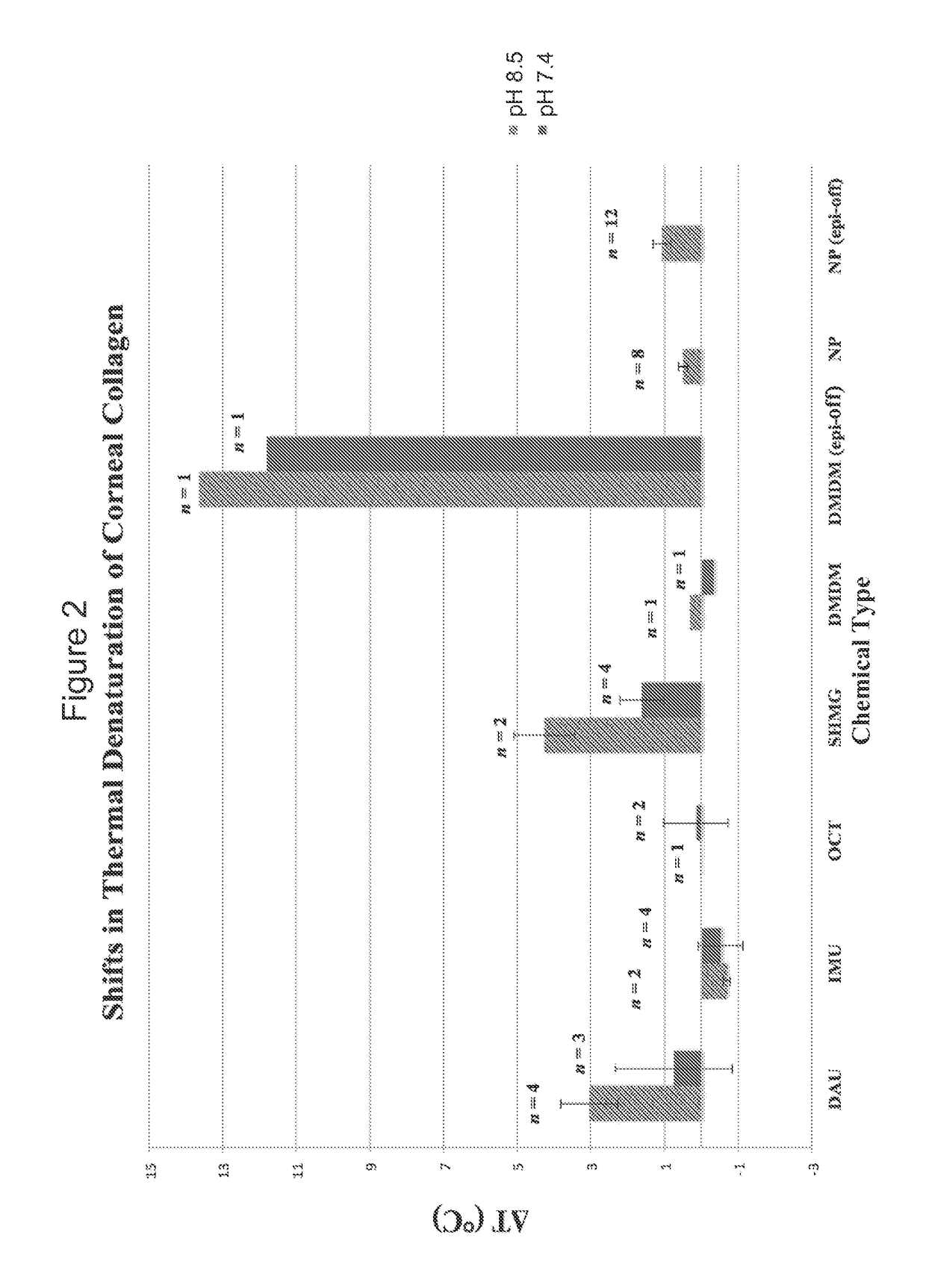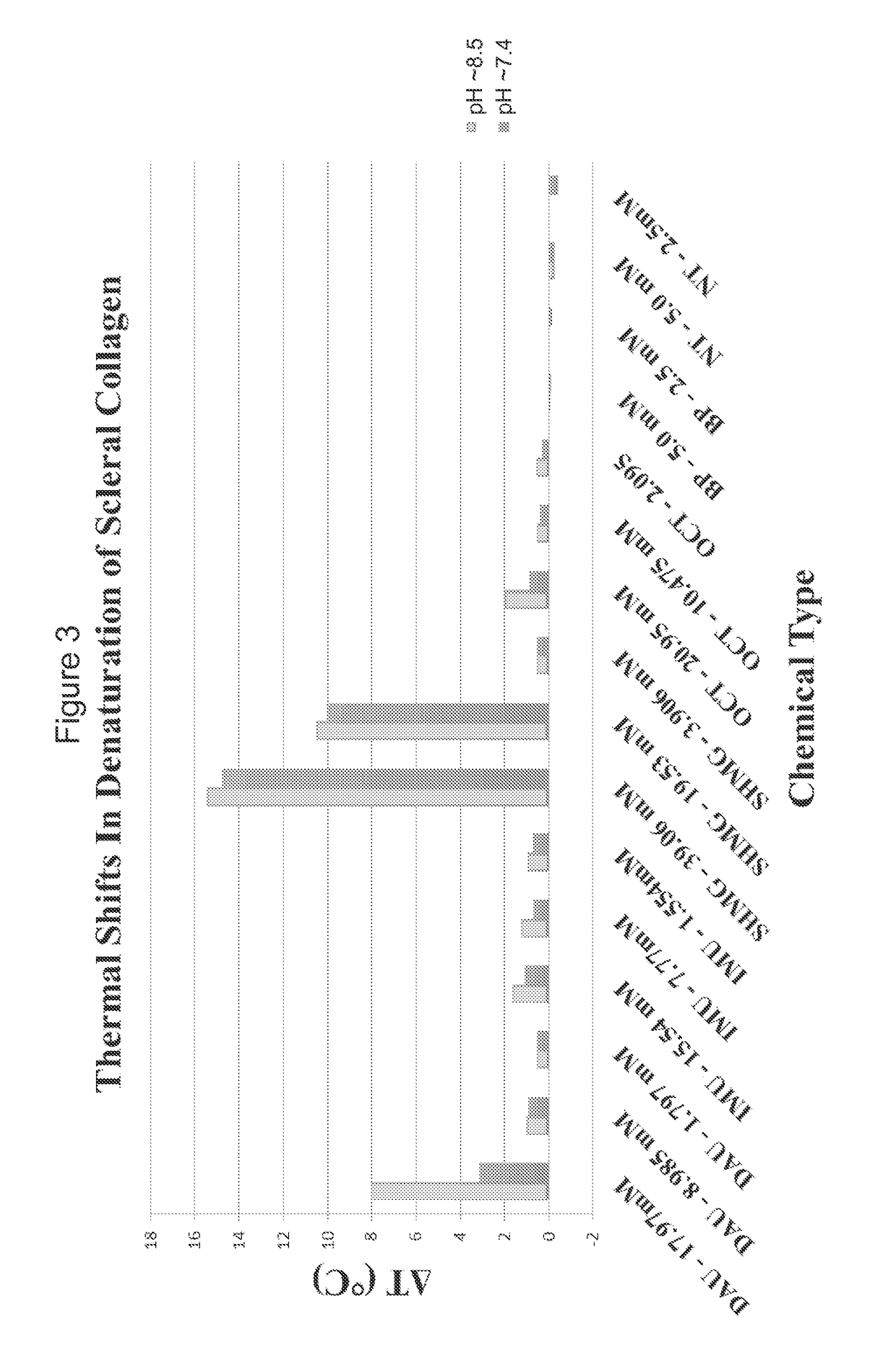Cosmetic preservatives as therapeutic corneoscleral tissue cross-linking agents
a technology of corneoscleral tissue and cosmetic preservatives, which is applied in the direction of animal/human proteins, chemical apparatuses and processes, drug compositions, etc., can solve the problems of corneal transplantation, contact lenses cannot be worn, and pathologic changes that take place are accompanied by a loss of biomechanical strength, etc., so as to avoid the need for eventual corneal transplantation. none of these options
- Summary
- Abstract
- Description
- Claims
- Application Information
AI Technical Summary
Benefits of technology
Problems solved by technology
Method used
Image
Examples
first experimental details
Cross-Linking Using Formaldehyde Releasing Agents (FARs)
[0048]A listing of formaldehyde releasing agents (FARs) was gathered from literature review. Sixty-four (64) formaldehyde releasing agents, regularly found in cosmetics, were identified from the literature. Each formaldehyde releasing agent was analyzed with respect to relevant characteristics for cross-linking, such as molecular weight, carcinogenicity / mutagenicity, toxicity, hydrophobicity, and commercial availability.
[0049]Based on this analysis, formaldehyde releasing agents were selected for efficacy screening using an ex vivo rabbit corneal cross-linking simulation setup, as described below.
[0050]0.5% proparacaine was applied prior to the cross-linking solution. A cross-linking solution containing the formaldehyde releasing agent was then administered via a corneal reservoir for 30 minutes in 0.1M NaHCO3 at either pH 7.4 or 8.5. The epithelium was left intact. The control contralateral eye was treated identically with veh...
second experimental details
Chemical Registry
[0052]A chemical registry of formaldehyde releasers (FARs) commonly found in cosmetics and other personal care products (PCPs) was compiled from a review of the literature. Information used to assemble this registry included characteristics relevant to tissue cross-linking such as molecular weight, European Union maximum allowed concentration (i.e. “max allowed”), carcinogenicity / mutagenicity, toxicity, hydrophobicity (log P), efficacy of formaldehyde release, and commercial availability of the chemicals. From the FARs identified, five compounds with favorable profiles were selected for cross-linking efficacy and toxicity evaluation. These compounds include diazolidinyl urea (DAU), imidazolidinyl urea (IMU), DMDM hydantoin (DMDM), sodium hydroxymethylglycinate (SMG), and 5-Ethyl-3,7-dioxa-1-azabicyclo [3.3.0] octane (OCT), which were specifically chosen because of the vastness of their use in cosmetics and PCPs as well as on their ability to donate formaldehyde in s...
first experimental details — example 1
First Experimental Details—Example 1
[0061]In a first example of the present invention, N-hydroxymethyl-N-(1,3-di(hydroxymethyl)-2,5-dioxoimidazolidin-4-yl)-N′-hydroxy-methylurea (diazolidinyl urea) was selected and employed in testing. FIG. 1 depicts the net apical displacement response over time for a control cornea and a cornea cross-linked through the use of diazolidinyl urea at pH 8.5. The cross-linked cornea produces a smaller net displacement than the control cornea. The method for inflation chamber testing analysis is described in Myers K M, et al.
[0062]Thus, N-hydroxymethyl-N-(1,3-di(hydroxymethyl)-2,5-dioxoimidazolidin-4-yl)-N′-hydroxy-methylurea (diazolidinyl urea) has been shown to be effective for cross-linking at pH 8.5. In comparison to the control, the Tm using diazolidinyl urea (DAU) was shifted 1.92° C.±0.14° C. (n=2). Furthermore, mechanical inflation testing confirmed increased tissue stiffness in pressure ranges mimicking physiological pressure (1.875-45 mmHg). F...
PUM
| Property | Measurement | Unit |
|---|---|---|
| temperature | aaaaa | aaaaa |
| temperature | aaaaa | aaaaa |
| pH | aaaaa | aaaaa |
Abstract
Description
Claims
Application Information
 Login to View More
Login to View More - R&D
- Intellectual Property
- Life Sciences
- Materials
- Tech Scout
- Unparalleled Data Quality
- Higher Quality Content
- 60% Fewer Hallucinations
Browse by: Latest US Patents, China's latest patents, Technical Efficacy Thesaurus, Application Domain, Technology Topic, Popular Technical Reports.
© 2025 PatSnap. All rights reserved.Legal|Privacy policy|Modern Slavery Act Transparency Statement|Sitemap|About US| Contact US: help@patsnap.com



